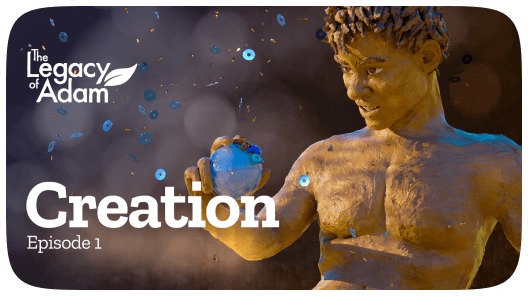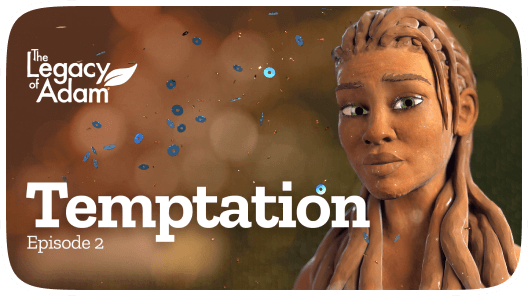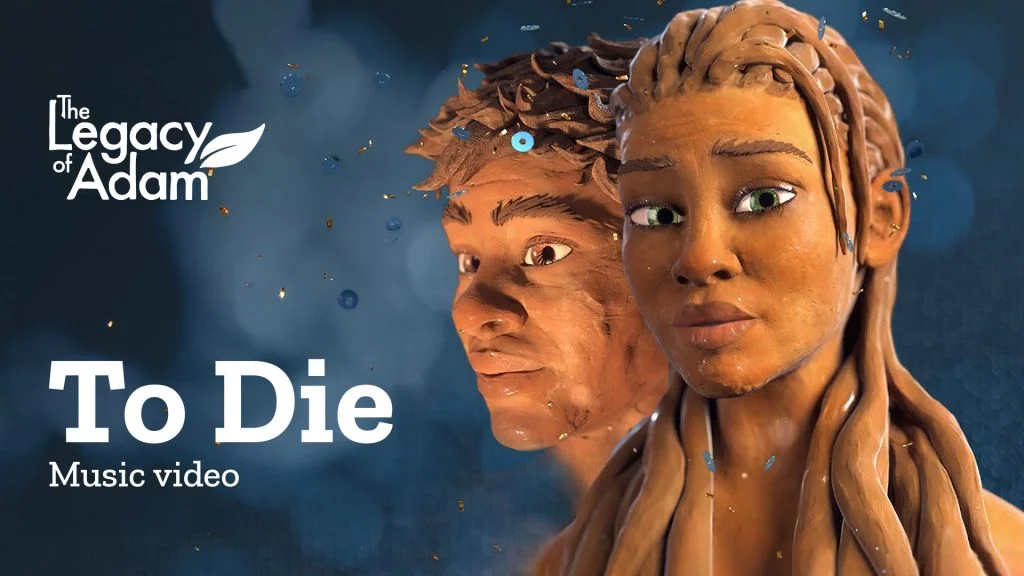
1. Isn’t it wrong to make artistic representations of Adam, or of God?
Sunni scholars since the 9th century have interpreted some hadith as implying a general ban on art depicting living beings (figurative art). However, many artistic representations of living beings are found in Islamic history, including pictures of humans and animals that adorned palaces of the Umayyad era, and paintings of Mohammad by Muslim artists in the 13th century. Besides, written descriptions of humans or God’s “hands” in the Qur’an inevitably produce figurative images in the minds of readers. Like the Bible, rather than condemning figurative art, the Qur’an condemns treating figurative art as an idol.
Like the Bible, the Qur’an condemns idolatry, but not the artistic depiction of human figures. As Malise Ruthven observes: ‘There is no explicit ban on figurative art in the Quran, but popular Muslim tradition became strongly iconophobic . . .’ The hadith against figurative art were (along with all hadith) written down more than a century after Mohammad’s death, and are tied to particular events in such a way that they need interpreting in order to be applied in any general manner. From the 9th century onward, Sunni exegetes increasingly saw in them categorical prohibitions against the representation of living beings, but different branches of Islam disagree on this subject: ‘Aniconism is common among fundamentalist Sunni sects . . . and less prevalent among liberal movements within Islam. Shia and mystical orders also have less stringent views on aniconism.’
Many artistic representations of living beings are found throughout Islamic history: ‘Frescos and reliefs of humans and animals adorned palaces of the Umayyad era . . . The ‘Abbasid Palaces at Samarra also contained figurative imagery. Ceramics, metal ware, and objects in ivory, rock crystal, and other media also bore figural imagery in the medieval era.’ In the 13th century, miniatures of Muhammad were commissioned from Muslim artists by rich patrons: ‘they show almost every episode of Muhammad’s life as recounted in the Qur’an and other texts, from birth to death and ascension into heaven.’
In Islamic literature, Muhammad’s appearance is described in the traditions about his life and deeds known as Sirah Rasul Allah. Literary descriptions of humans in the Qur’an inevitably result in imaginative depictions of humans in the minds of readers. John Kaltner and Younus Mizr note that: ‘The reference of divine hands, as well as other anthropomorphisms that are used to describe God in the Qur’an, have been discussed frequently by Muslim commentators, and it is generally held that they are not meant to be taken literally.’ Likewise, the visual depiction of God in The Legacy of Adam is not meant to be taken literally.
2. Does episode 1 deny that God is ‘Creator of the heavens and the earth’ (Surah 14:10) by depicting God as creating ‘Eden’ and then a Garden of Eden on Earth, in which He creates plant and animal life, before creating Adam and Eve there?
Episode 1 takes some ‘artistic license’ in portraying the creation. In Genesis 1:1-2:3 God creates ‘the heavens and the earth’, including mankind ‘in his own image . . . male and female . . .’ (Genesis 1:27.) Genesis 2:4-24 describes God forming ‘the man of dust’ before planting ‘a garden in Eden, in the east’ where ‘he put the man whom he had formed.’ (Genesis 2:8.) In the original Genesis account, Eden and the Garden are clearly parts of the Earth.
Episode 1 is an artistic representation of material from the first two sections of the Old Testament book of Genesis. As such, it takes some ‘artistic license’. Chapter 1:1-2:3 is about God creating ‘the heavens and the earth’, including His creation of ‘man’, i.e. mankind, ‘in his own image . . . male and female he created them.’ (Genesis 1:27.) Chapter 2:4-24 is about God forming ‘the man of dust’ before He planted ‘a garden in Eden, in the east’ where ‘he put the man whom he had formed.’ (Genesis 2:8.) It is clear that Eden and the Garden are specific parts of the Earth. Indeed:
The Persian Gulf Oasis seems to match the description of the Garden of Eden in Genesis. Till about twelve to ten thousand years ago, the seas were hundreds of feet lower. Surprisingly evocative of the Genesis account of the Garden, the Persian Gulf was dry land, irrigated by four rivers, without rain, but with fresh water springing up out of the ground. As seas rose globally, the Persian Gulf was submerged under the ocean . . .
Some people think these two stories in Genesis offer different perspectives on the same events, such that that Adam and Eve either are, or are a part of, the humanity created by God in Genesis 1:27. Other people think Genesis 2:4-24 follows on in historical sequence from Genesis 1:1-2:3, in which case Adam and Eve are particular people created by God after His creation of humanity in general, an interpretive option excluded by Surah’s 4:1 and 7:11-27 of the Quran.
3. According to the Qur’an, God created ‘in six days’, so why does the creation in episode 1 clearly take longer than six days (the trees are shown growing naturally, with a time-lapse effect of days and nights happening in the background)?
Episode 1 is an artistic representation of material in Genesis 1 and 2. The Qur’an gets its description of God creating ‘in six days’ (Surah 11:7 & 50:38) from Genesis 1:1-2:3. While some people interpret this passage literalistically, most people recognize it isn’t meant to be read this way, and that the ‘days’ of creation should be understood as a literary framing device and/or an analogy for God’s creative activity, or as representing extended periods of time.
Episode 1 presents an artistic representation of material taken from the first two sections of Genesis (i.e. Genesis 1:1-2:3 and Genesis 2:4 ff.), with a focus on the material in the second section. The Qur’an gets its description of God creating ‘in six days’ (Surah 11:7 & 50:38) from Genesis 1:1-2:3. While some people interpret Genesis 1:1-2:3 in a literalistic manner that reads the six days as consecutive 24-hour time periods, most people recognize that it isn’t meant to be read in a literalistic way, and that the ‘days’ of creation should be understood as a literary framing device and/or as an analogy for God’s creative activity, or as representing extended periods of time. Indeed, theologian Matthew Bennett observes that: ‘Many contemporary scholars of Islam contend that the Arabic word for day (yom) can refer to a literal twenty-four-hour period or a much larger time more aptly translated as “age.” Furthermore, Qur’an 71:13–17 indicates that God’s created world has undergone a gradual process of development . . .’
4.Why does God say He will ‘make man in our image’?
The Biblical language about man being created in God’s ‘image’ doesn’t mean we literally look like God, but is an even more exalted version of the Qur’an’s description of humans as God’s caliph on earth [Surah 2:30].
Although the Qur’an doesn’t use the figurative language of humans being created in God’s ‘image’ (which does not mean being made to physically resemble God, because God is a spiritual being, but which means that God entrusts humans with the responsibility of stewardship), it does use a somewhat similar concept. As Chawkat Moucarry observes:
The creation of human beings in the image of God is not a concept found in the Qur’an. The Qur’an does, however, describe humanity as God’s caliph on earth ([Surah] 2:30). The Arabic word khalifa is used to refer to the men who succeeded Muhammad at the head of the Muslim nation. When it is applied to people in general, it indicates that the Creator has entrusted us with the responsibility of representation and of stewardship (cf. [Surah] 38:26).
That said, Andy Bannister explains that: ‘For the Qur’an, humans are valuable and important, but just slaves of Allah. For the Bible, humans are far more than that: they are image bearers, people with intrinsic and fundamental value and dignity because of their very nature.’
5. Why does episode 1 show Adam being created alone in the Garden of Eden and Eve being created later out of ‘one of Adam’s ribs’?
The Qur’an interprets and retells the original Biblical story about Adam in a way that fits its own theology.
As Andy Bannister comments: Whenever the Qur’an retells biblical stories and traditions, it adjusts and adapts them, reshaping them to fit its own theology and agenda.’ According to Surah 4:1, God ‘created you from one person, and created from him his wife, and scattered from the two of them many men and women.’ In other words, the Qur’an is clear that God created Hawwã (i.e. Eve) from Adam. Moreover, as John Kaltner and Younus Mizra point out: ‘while the Qu’ran does not detail how Eve/Hawwã’ was created, many commentators narrate that she was created from Adam’s rib.’ There is a hadith in which Mohammed says: ‘Treat women kindly. Woman has been created from a rib and the most bent part of the rib is the uppermost. If you try to turn it straight, you will break it.’ However, this doesn’t appear to be a statement about Eve’s material origins, but a metaphor warning against a husband trying to reshape the character of his wife.
Some people think Genesis 2:21’s depiction of God creating Eve from one of Adam’s ‘ribs’ whilst he sleeps is intended as a literal description of events. Other people think it is intended figuratively. Either way, the traditional reference to ‘one of his ribs’ is probably the result of poor translation, as when the Hebrew word translated as ‘ribs’ in Genesis 2:21 is used elsewhere in the Old Testament, it ‘is not as an anatomical term in any other passage.’ In these other passages, the word refers to planks or beams, to this or that ‘side’ of an architectural plan, or to the other ‘side’ of a hill (2 Samuel 16:13). Hence Genesis 2:21 should probably be translated: ‘So the LORD God caused a deep sleep to fall upon the man, and while he slept took one of his sides and closed up its place with flesh.’ Furthermore, when the phrase ‘deep sleep’ is used in other Old Testament passages, including later in the book of Genesis (i.e. Genesis 15:12-16), when a person has a vision from God (see also Daniel 7:1 & 8:18). Hence theologian John Walton argues from an examination of the Hebrew text that:
Adam’s sleep has prepared him for a visionary experience rather than a surgical procedure. The description of himself being cut in half and the woman being built from the other half (Gen. 2:21-22) would refer not to something he physically experienced but to something that he saw in a vision. It would therefore not describe a material event but would give him an understanding of an important reality, which he expresses eloquently in Genesis 2:23.






